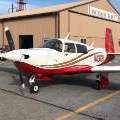Who brings the power back on climb?
Do you reduce throttle and/or prop in climb of NA Mooney?
52 members have voted
-
Members Online
- CCAS
- Zippy_Bird
- DC_Brasil
- 1980Mooney
- bonal
- eman1200
- bhtitle
- bigmo
- toto
- EricJ
- Skates97
- ohdub
- Ron McBride
- Tx_Aggie
- NickG
- Cody Stallings
- kortopates
- DanM20C
- FoxMike
- exM20K
- birdofjoy
- Schllc
- Mmrkulic
- PT20J
- Kelpro999
- TCC
- Planter
- MikeOH
- DXB
- 802flyer
- Parker_Woodruff
- JB2000
- Slick Nick
- Brian2034
- Greg Ellis
- jetdriven
- Guy123
- takair
- LANCECASPER
- 201Mooniac
- crustymuffin
- GDGR


Recommended Posts
Join the conversation
You can post now and register later. If you have an account, sign in now to post with your account.